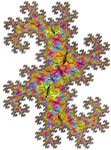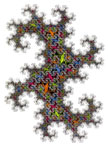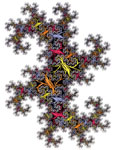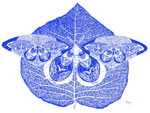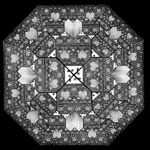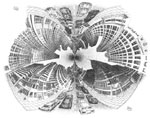|
1.
Dragon
Limit I, handcolored Serigraph, 64 x 30 cm / 18 x12 in. US$550
2.
Dragon Limit II, handcolored Serigraph, 64 x 30 cm / 18 x12 in. US$500
3.
TDragon
Limit III, handcolored Serigraph, 64 x 30 cm / 18 x12 in. US$550
4.
Dragon Limit IV, handcolored Serigraph, 64 x 30 cm / 18 x12 in. US$500
5.
Magic Castle, Serigraph 51 x 41 cm / 20 x 16 in. US$400
6.
Moth, Serigraph, 30 x 64 cm / 12 x18 in. US$350
7.
Octagon Limit, Serigraph, 36 x 36 cm / 14 x
14 in. US$400
8.
Magnetically Distorted City, Serigraph, 64 x 30 cm / 18 x12 in. US$400
9.
Division
of Plane with Dragon, Serigraph, 61 x 46 cm / 24 x18 in. US$400
10.
Bifurcating Fish, Serigraph, 15 x 23 cm / 6
x 9 in. US$350
11.
Tree, Serigraph, 30 x 64 cm / 12 x18 in. US$300
12.
Sunflower, Serigraph, 61 x 46 cm / 24 x18 in. US$400 |

